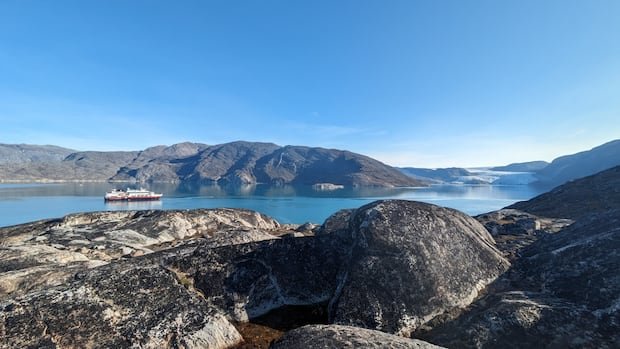A recent study has revealed the presence of the initial invasive barnacle species in the waters of Nunavut, potentially linked to rising water temperatures. The findings were recently detailed in the journal Global Change Biology. The traditional icy waters of the Arctic have long acted as a natural barrier against invasive species migration, but with the rapid warming of the region, new shipping routes are emerging, weakening this protective barrier.
The surge in shipping activities in certain parts of Arctic Canada, with an increase of more than 250% since 1990, is facilitating the transportation of non-native species to the area. The bay barnacle (Amphibalanus improvisus), commonly found in European waters and the Pacific Ocean, has been detected in multiple locations across the Canadian Arctic.
Betty Boyse, a molecular biologist from the British Antarctic Survey and one of the study’s co-authors, conducted the research during expeditions on cruise ships. Most of the barnacles were identified near Pond Inlet, a significant entry point to the Northwest Passage.
The researchers utilized environmental DNA collected from the waters they traversed to identify the barnacles, as they were not visually observed. Boyse explained that barnacles, being filter feeders, attach themselves to surfaces on ships to feed on passing water nutrients.
Arctic Vulnerability on the Rise
While the bay barnacle presence may not pose an immediate threat to the ecosystem, it serves as an alarming indication of the Arctic’s increasing susceptibility to invasive species. Fisheries and Oceans (DFO) Canada acknowledged the significance of the study findings, emphasizing the need for further monitoring and confirmation to ascertain if the detected DNA corresponds to a live organism.
DFO highlighted their use of environmental DNA techniques, scientific research, and collaboration with Indigenous communities to monitor and address the introduction of aquatic invasive species in the Arctic.
Shelley Elverum, co-founder of the non-profit organization Ikaarvik, stressed the importance of involving Inuit communities in research efforts to prioritize local concerns and knowledge.
Rising Incidence of Invasive Species
DFO reported the detection of other non-native aquatic species in the Canadian Arctic, but the origin of these species and their entry into the region remain uncertain. The risk of introducing invasive species is particularly high in ports like Churchill, Manitoba, due to extensive vessel traffic and ballast water discharge.
Another study, conducted in 2015, found bay barnacles near Churchill, Manitoba, attributing their presence to hull fouling. Collaboration with the Aqqiumavvik Society in Arviat, Nunavut, revealed no barnacles in areas with minimal shipping activity.
Jimmy Qamaniq Muckpah from the Aqqiumavvik Society noted the emergence of non-native animals near Arviat and emphasized the need for stringent ship inspections to prevent the spread of invasive species.
Preventing Spread Through Regulation
With the increasing threat of invasive species infiltrating the Arctic due to expanding shipping routes, proactive measures are essential. Betty Boyse urged the Canadian government to enhance monitoring and enforce regulations for vessels entering the region, emphasizing the importance of protective actions for local communities.
Transport Canada highlighted existing regulations addressing pollution reporting and ballast water management, along with collaborative efforts with the International Maritime Organization to combat biofouling on vessels.
Tag: rewrite-pending
